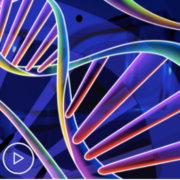How is Acute Myeloid Leukemia (AML) Treated? from Patient Empowerment Network on Vimeo.
When diagnosed with Acute Myeloid Leukemia (AML), understanding available treatment options can be overwhelming. Dr. Alice Mims, an AML specialist, provides an overview of AML therapies and discusses factors to consider when deciding on an appropriate therapy with your healthcare team.
Dr. Alice Mims is a hematologist specializing in acute and chronic myeloid conditions. She serves as the Acute Leukemia Clinical Research Director at The Ohio State University Comprehensive Cancer Center – James.
See More From The Pro-Active AML Patient Toolkit
Related Resources
Transcript:
For the past 30 years, we’ve had the same treatment options, which have been standard intensive induction chemotherapy that weren’t really tailored to individual patients and had significant toxicity. And not necessarily effective for all AML genomic subtypes.
Now we have quite a bit added to the treatment arsenal for AML, including continuing intensive induction chemotherapy for patients who are appropriate. There’s also been the addition for newly diagnosed patients for hypomethylating agents and a new BCL-2 inhibitor called Venetoclax. IDH inhibitors for patients with IDH1 and IDH2 mutations. The addition of FLT3 inhibitors for patients either newly diagnosed or with relapse or refractory disease.
And liposomal daunorubicin and cytarabine in for patients with AML with MDS related changes or therapy related AML that are newly diagnosed. Lastly, there’s also a hedgehog inhibitor, glasdegib, that’s been approved for newly diagnosed AML patients in combination with low dose cytarabine.
So, when working with patients, there are multiple factors that we take into consideration when coming up with a treatment decision together and it really should be a team approach. But one of the most important things is trying to understand the patient’s goals of care.
Because different treatments have different expectations, side effects, toxicities that we want to be sure we’re all aligned when we’re making a treatment decision together. Also, other features that we take into account can be age. Other comorbidities, including other diagnosis such as cardiovascular disease, diabetes and other medical issues patients may have.
So, for roles that patients have in making these decisions, they should know that they’re their own best advocate. And so, as you’re getting to learn your oncologist who’s helping you make these treatment decisions, it’s very important that you talk about things that are important to you in regards to quality of life, overall goals for your life. Ask questions in regard to side effects and expectations for outcomes for potential treatment. Whether they’re curative or more palliative, which can extend life. And for quality of life, it may not be curative for AML.
So, AML really was considered a single disease 30, 20 years ago. Now we really know it’s likely dozens of diseases based off of looking at molecular features of an individual patient’s AML. So, it’s very important to try to understand what genomic features your AML may have, meaning DNA mutations that are just present in the leukemia cells. Chromosomal changes as well. And then understanding if, based off that information, that that may afford you additional treatment options other than the current standards of care.










